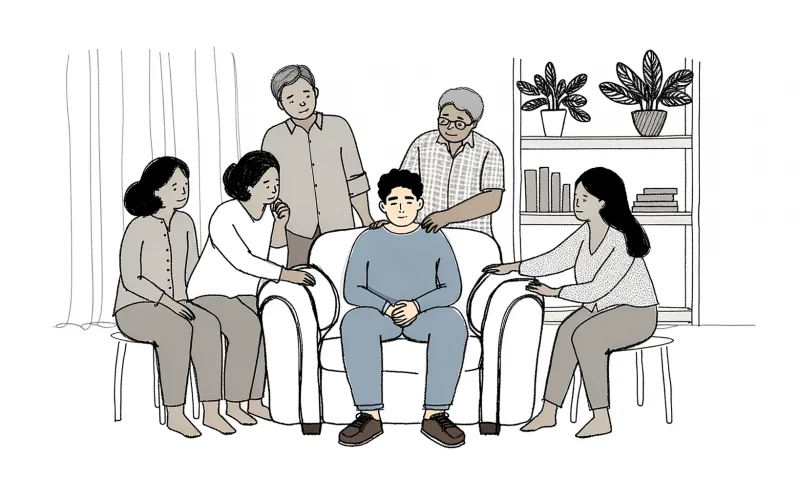While surgeries can vary depending on stage and type of testicular cancer, below are the most common surgeries, including the required Inguinal Orchiectomy.Inguinal orchiectomy: A procedure to remove the entire testicle through an incision in the groin. A tissue sample from the testicle is then viewed under a microscope to check for cancer cells. (Thesurgeon does not cut through the scrotum into the testicle to remove a sample of tissue for biopsy, because if cancer is present, this procedure could cause it to spread into the scrotum and lymph nodes. It’s important to choose a surgeon who has experience with this kind of surgery.) If cancer is found, the cell type (seminoma or nonseminoma) is determined in order to help plan treatment. [1]Retroperitoneal lymph node dissection: (RPLND) is a procedure to remove abdominal lymph nodes to treat testicular cancer, as well as help establish its exact stage and type. It is usually performed using an incision that extends from the sternum to several inches below the navel. While laparoscopic methods may be used, they have been considered less effective by some surgeons. [1]Port/Port-a-cath (optional) – A port is a small, round disc that is placed under your skin during minor surgery. A surgeon puts it in place before you begin your course of treatment (chemotherapy), and it remains there until you have finished. A catheter connects the port to a large vein, most often in your chest. Your nurse can insert a needle into your port to give you chemotherapy or draw blood. This needle can be left in place for chemotherapy treatments that are given for longer than one day. Be sure to watch for signs of infection around your port.Orchiectomy: removal of the testicle (inguinal orchiectomy) and some of the lymph nodes may need to be surgically removed. (RPLND) See Inguinal Orchiectomy in “Surgeries” for more information. Surveillance: is closely following a patient’s condition without giving any treatment unless there are changes in test results. In surveillance, patients are given CT scans, chest x-rays, and blood work on a regular schedule. Regular schedules will be determined with your doctor. Radiation therapy: is a cancer treatment that uses high-energy x-rays or other types of radiation to kill cancer cells. There are two types of radiation therapy. External radiation therapy: uses a machine outside the body to send radiation toward the cancer. Internal radiation therapy: uses a radioactive substance sealed in needles, seeds, wires, or catheters that are placed directly into or near the cancer. The way the radiation therapy is given depends on the type and stage of the cancer being treated. Chemotherapy: Chemotherapy (chemo) is the use of drugs to treat cancer. The drugs can be swallowed in pill form, or they can be injected by needle into a vein or muscle. To treat testicular cancer, the drugs are usually given into a vein. Chemo is systemic therapy. This means that the drug travels throughout the body to reach and destroy the cancer cells. Chemo is an effective way to destroy any cancer cells that break off from the main tumor and travel to lymph nodes or distant organs.Chemo is often used to cure testicular cancer when it has spread outside the testicle or to decrease the risk of cancer coming back after the testicle is removed. It is not used to treat cancer that is only in the testicle.Doctors give chemotherapy in cycles, with each period of treatment followed by a rest period to allow the body time to recover. Chemo cycles generally last about 3 to 4 weeks. The main drugs used to treat testicular cancer are:
- Cisplatin
- Etoposide (VP-16)
- Bleomycin
- Ifosfamide (Ifex®)
- Paclitaxel (Taxol®)
- Vinblastine
Using 2 or more chemo drugs is often more effective than using any single drug. The chemotherapy regimens most commonly used as the initial treatment for testicular cancer are:
- BEP (or PEB): bleomycin, etoposide, and cisplatin
- EP: etoposide and cisplatin (also known as EP)
- VIP: VP-16 (etoposide) or vinblastine plus ifosfamide and cisplatin
Some doctors use more intensive regimens for patients with high-risk disease, and may suggest a different combination of chemotherapy drugs or even a stem cell transplant.http://www.cancer.org/cancer/testicularcancer/detailedguide/testicular-cancer-treating-chemotherapy




